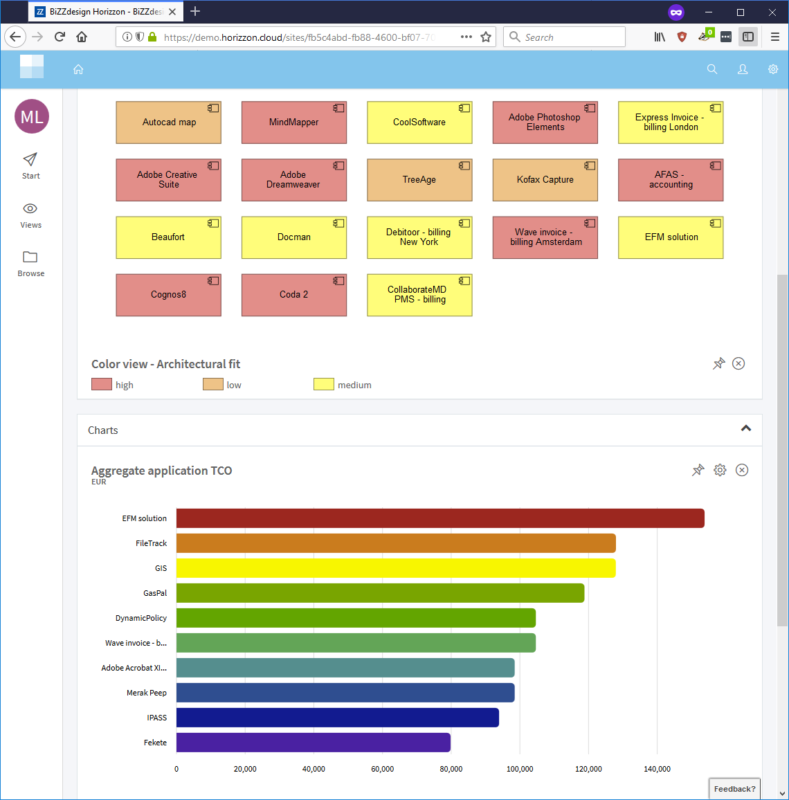In modern enterprises, change is no longer a simple, top-down affair. All levels of the organization need to be involved, and everyone from shop-floor employees to the CEO need to work on local improvements to business processes. Lean projects and agile product development teams must rapidly innovate digital environments, strategists need to invent and experiment with new business models, project and program portfolio managers have to decide on investment allocations, and those responsible for domains like risk management and regulatory compliance have to do their part. This “all hands on deck” approach requires enterprise-wide transparency and visibility of plans, structures, opportunities and constraints.
Traditional management took a ‘divide and conquer’ approach: work was split into standardized tasks, handled by specialists and sequenced into business processes and value streams. F.W. Taylor, with his Scientific Management theory, laid the foundations for this 20th century method, which proved to be an excellent way to extract maximum efficiency from enterprises. All mass production, even today, is organized this way, and to great effect.
However, the typical Taylorist organization has a hierarchical, pyramidal structure where ‘management information’ flows up the hierarchy and management directives trickle down in the opposite direction. With the rise of knowledge-intensive organizations and the capabilities that information technology offers, this form of enterprise organization is unfit for the 21st century.
This is because the 20th century approach has several key flaws:
– Change can only happen from the top down, which is often a slow-moving process across many organizational layers. This is increasingly problematic in today’s ever more volatile business and technology environment. Acting fast is often the only way to survive.
– Change has to be designed up-front and is often implemented in a linear way, with little room for feedback loops and learning. Learning experiences have to move up the organization and back down again before they have any effect.
– Employee potential is not used effectively, especially lower in the hierarchy. On the one hand, this doesn’t take optimal advantage of the creativity and knowledge of those closest to the actual work. On the other, this leads to demotivation, especially among highly skilled professionals who make up an increasing part of the workforce.
This is, of course, not news. As my colleague Peter Matthijssen recently argued, we have to change the way we change to become more adaptive as an enterprise. Approaches like agile software development and Lean Startup have made great strides in creating more suitable ways to implement change – but they also have their problems.
A major reason for the hierarchical ‘divide and conquer’ approach was the difficulty inherent in dealing with the data needed to control an enterprise. Only through successive layers of manual aggregation could a usable set of information be created and used to direct the enterprise. Lean and agile approaches frequently suffer from the opposite problem: having a small-scale focus (e.g. the agile team, a single product, one specific business process, one customer journey) that lacks the bigger picture. This can lead to local optimization that may be counter to the interests of the organization as a whole.
In both cases, a lack of transparency is the root cause of the problem: no one knows what is going on throughout the enterprise. Without the proper information, you are not allowed to make any local decisions and instead have to ask someone higher up the ranks with the authority to make a gut decision. In addition, if you lack good situational awareness, your local improvements and innovations may have unforeseen and unwanted consequences.

A combination of modern software technology and clearer understanding of the various aspects of enterprises now allows us to overcome this lack of transparency and easily track all the moving parts within an organization. Today, you can create an accurate picture of the state and direction of your organization, and make this information readily available to everyone concerned at their level of detail or aggregation.
Relevant input data can now be harvested automatically from various information systems, ranging from the IT landscape monitored by your CMDB to key indicators from your financial systems, and supplemented by external sources of data that provide you with a view of your wider ecosystem. These data inputs (and the insights they provide) may even inspire and enhance creative projects, according to the Harvard Business Review.
In the 21st century, enterprise-wide collaboration is also greatly facilitated by software solutions. Traditional vertical reporting lines are supplemented (or even completely replaced) by virtual, cross-functional and globally distributed teams, supported by collaboration software like social enterprise tools, online Kanban boards, workflow management systems and more.
Combining data aggregation, information visualization and daily workflow elements, BiZZdesign’s product suite offers the right components to support this level of collaboration: Enterprise Studio offers the description and analysis of your enterprise from various points of view , ranging from strategists defining new business models to portfolio managers deciding on funding of change initiatives, from business unit managers needing insight in the performance of their operational processes to IT architects designing future application landscapes, and from risk officers assessing regulatory compliance to business process participants making local improvements to their way of working. The HoriZZon collaboration platform allows access to this information across the organization so everyone can work together towards a shared initiative.